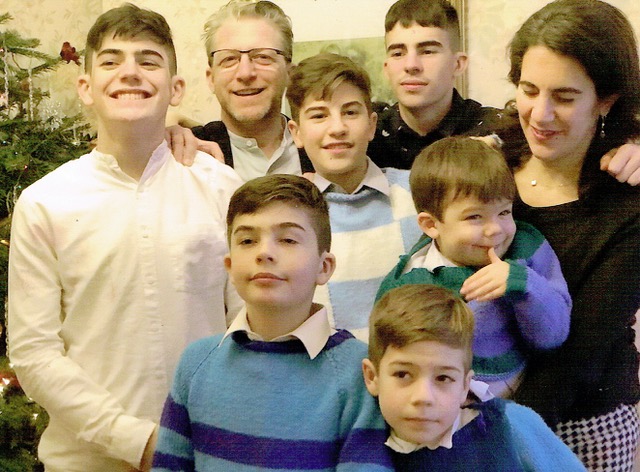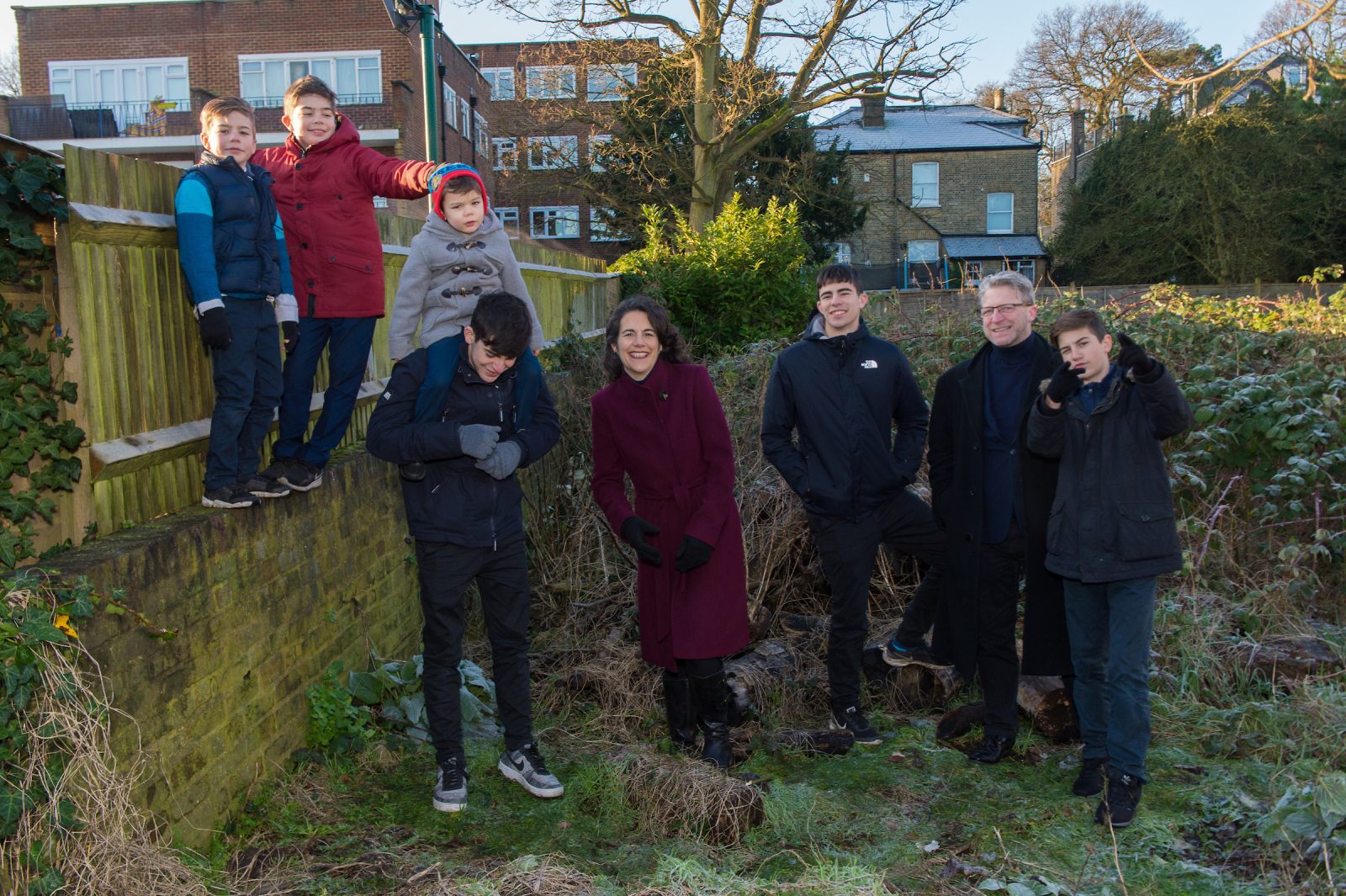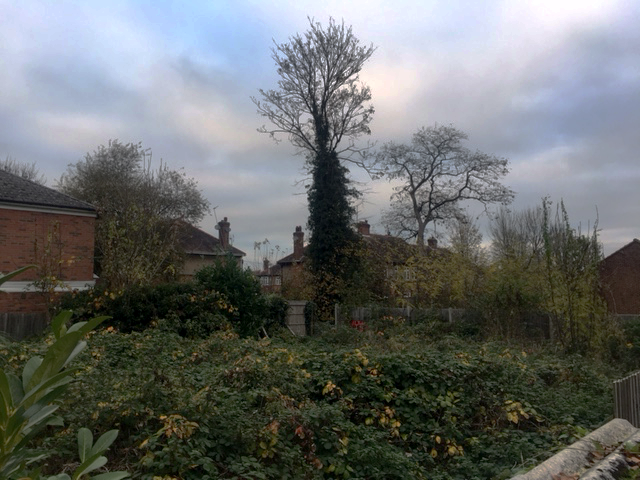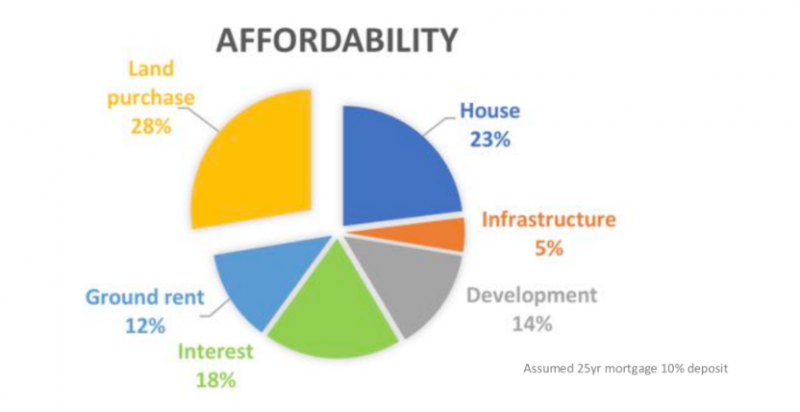We’re following the story of Anne, mother of six boys who is building a home for her family and one for the grandparents on the same site. They used the Right to Build to help them escape the private rental sector, acting as pioneers for the legislation, which even the council was unsure about at the time.

Part 9: The Affordability Question
A quick recap:
Edged out by a new discourse between church and state, we tried to counter the market intentions of the Church’s property dept with community ideas, which secured an appointment to make a pitch to the Bishop of Edmonton. Meanwhile, we tried to reach someone in the council who might share a similar vision for Community Housing.
Local policy support
Having secured a meeting with the Bishop it seemed pragmatic to try and get support from Enfield Council so that any proposal using the combined church and council land would carry more weight.
While looking for supportive policy we stumbled across a document “Custom & Self Build in Enfield” (now removed, but see this meeting), which put forward a strategy for delivering custom and self build homes on small-scale council-owned sites. Based on a leasehold model, it reduced upfront costs for purchasers in return for long- term ground rental income for the council.
It seemed perfect – the ideas were very much in tune with parts of what we had been proposing (See Part Three: The Land Value Idea) but much more developed in terms of implementation. The report hoped its pioneering lead might encourage other public landowners to follow.
The report was by the Regeneration department at Enfield Council and its leader was Peter George, who in the words of ‘Naked House’ (Blog 7) was a forward thinking man, looking at innovative ways to solve the housing crisis. The Naked House idea put forward a plan as an alternative custom building service provider trying genuinely to provide affordable homes on a not-for-profit basis.
We thought we could position ourselves as the ‘self build’ service provider with a similar offering. Unfortunately getting to meet or even speak to Mr George was a challenge that even my persistent efforts failed to achieve. I was passed from one department to another until I ended up back to square one at the door of the property disposals manager!
Universal challenges
We reconnected with Naked House and found we both had two major challenges:
- The government was trying to ban ‘ground rents’ on the basis that some have been misused. Some larger developers had sold leasehold houses with clauses enabling ground rents to double every 10 years so making the homes expensive and unsaleable. Community Land Trust groups were campaigning to include exemptions for community groups but these clauses needed careful working out. (In the end they were successful and CLTs are exempt from such charges.)
- The issue of how to make the model affordable, as buying land is a significant upfront cost. For a family buying, using the ground rent model they get a house at say 1/3rd below market price (1/3 being value of land). You could call it a ‘shared equity’ model as they own the house and have a mortgage for that but pay rent for the land – or like owning a flat.
Creating our prospectus for affordability
We based our workings on the following:
- For a house price of £450k (average for Enfield, although many houses are more than this), excluding say 1/3 for the land value, an average family could get a mortgage 5 x their joint incomes.
- This could equate to around £300k and, assuming they could find 10% deposit, a mortgage at 3.5% apr would cost around £1,300/month, based on a 25 year product.
- The land value would be converted to a ground rent which they intended would be an annual charge calculated as 5% of the land value (if, for example, this was £150k).
Worked out in this way, the land proposition would be a good deal for the local Treasury, as it promised to recover the sale value of the land in a roughly 20 year period, and then would continue to deliver non-tax revenue to the local authority for the long term.
However, it is no longer affordable for the families if, on top of the mortgage, they have to pay 5% of £150k = £7,500 per year (or £625 month). We felt that this additional cost meant that 5% was clearly too high.
There is a similar scheme in Canberra, Australia, which was founded on Garden City principles. There the government land rent scheme was 4% with a discounted rate of 2% for families on low to middle incomes. The Government land rent is calculated on the unimproved value of land and lessees are required to construct a house on the land within two years of the lease being granted. So 2% is probably the level that Naked House would need and they subsequently were looking at that sort of level in the interest of affordability.
We hoped we could deliver affordable housing at 75% market price. 80% market price was the magic number picked by the Coalition government as a definition of ‘affordable housing’, although this still unaffordable to many families.
This would be achieved in three ways:
- The church would keep the land and charge a ground rent;
- The scheme would be a mixed community with higher income families paying closer to market price, while an element of bursary could be available for those on lower incomes, on a needs basis;
- As a community scheme some sales risk, finance cost and developer profits could be reduced to deliver a further affordability factor – perhaps 10%.
Our prospectus was coming together! We were ready to offer the church a ‘fresh revolution in housing’, just as the Archbishop of Canterbury had called for, one that was values led and offered a vision of better affordability.
Find your self and custom build register on the Right to Build Portal.
Read the other parts of the Self Build Family Build Blog.
Part One: Deciding to Self Build, the Turning Point
Part Two: Looking for Land in London
Part Three: The Land Value Idea
Part Four: A Small Matter of Access
Part Five: The Mystery of the Road Unravelled
Part Seven: Best Consideration Pursuing our Community Building Idea
Part Eight: Calling on Higher Parts
Photo: printed with permission of Fiona Hanson 2020©






